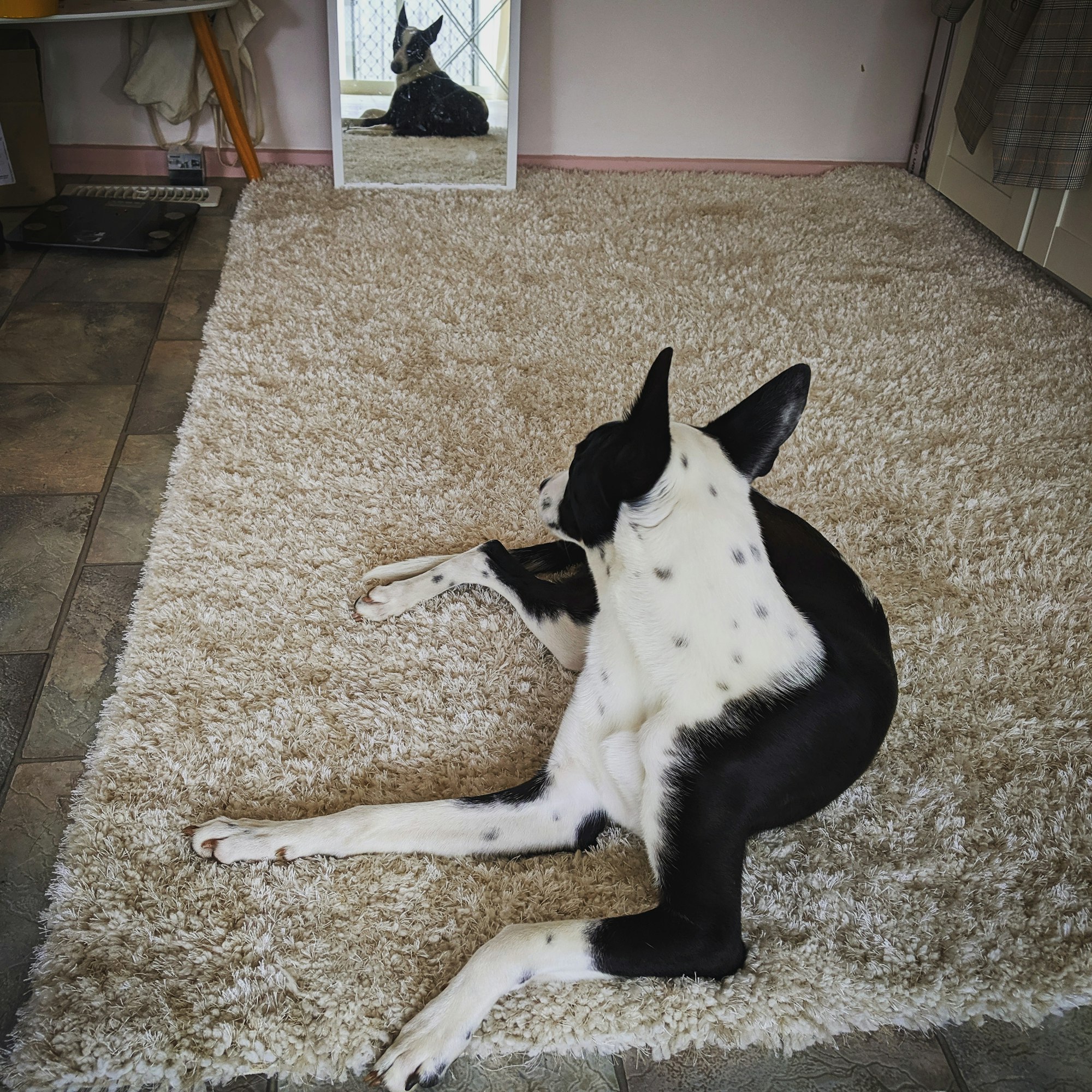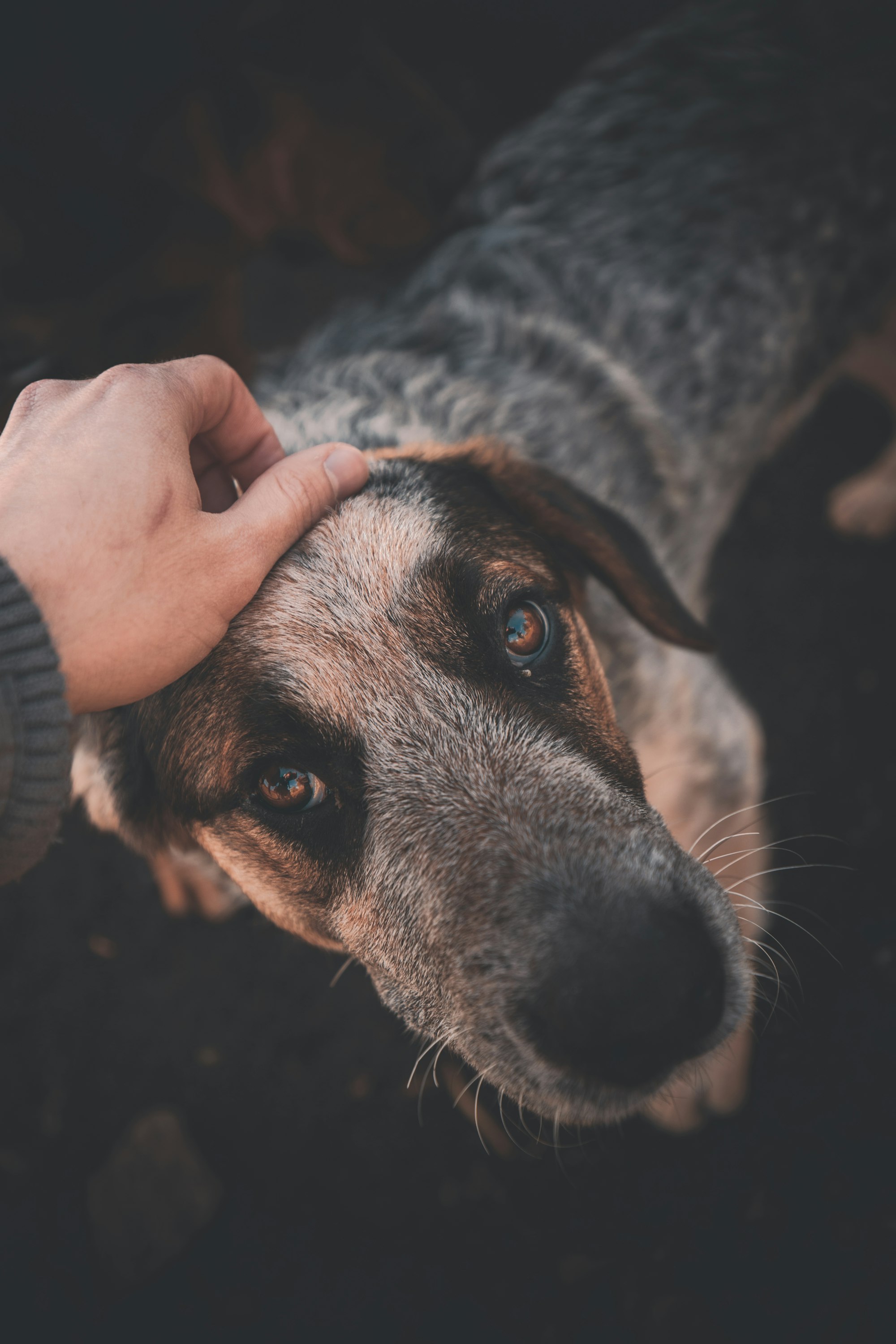Have you ever noticed your canine companion gazing into the mirror, seemingly fascinated by their own reflection? It's a captivating sight that sparks a fascinating question: Can dogs recognize themselves in the mirror? Do they perceive their own image or simply view it as a curious object? As pet owners, we're often intrigued by our furry friends' behaviors, particularly when it comes to their interactions with the world around them. In this article, we'll delve into the captivating world of canine self-awareness and explore the question of whether dogs possess the ability to recognize themselves in the mirror.

Behind the Reflection: Unraveling Canine Reactions to Mirrors
For us humans, it may seem almost instinctive to recognize our own reflection in a mirror. We can brush our hair, fix our appearance, or even strike a pose without a second thought. But what about our furry companions? Can they make sense of the image staring back at them? The topic of dogs and mirrors has intrigued researchers and pet owners alike, leading to a deeper exploration of canine reactions to mirrors.
One common observation among dog owners is the wide range of reactions their pets display when encountering a mirror for the first time. Some dogs may become highly curious, tilting their heads and pawing at the glass, while others may show signs of fear or even aggression. Or some will do absolutely nothing and carry on with their day. These varied responses hint at a deeper level of complexity in how dogs perceive their reflections.
Understanding the underlying reasons for these diverse reactions requires us to consider various factors. For instance, a dog's breed, age, and individual personality can significantly influence how they respond to their reflection. Additionally, their previous experiences and exposure to mirrors, as well as their overall level of socialization, may play a role. Dogs are highly perceptive animals, and their reactions could stem from a combination of confusion, curiosity, or even a perceived threat.
Spotting the Self-Recognition: Clues from Animal Psychology
Unlocking the mystery of whether dogs can recognize themselves in the mirror has prompted researchers to delve into the realm of animal psychology. By examining behaviors associated with self-recognition in other species, such as primates and dolphins, scientists have sought to draw parallels and gain insights into dogs' responses to mirrors.
A significant benchmark in assessing self-recognition is the mirror self-recognition test (MSR). In this test, a mark or dye is applied to an individual's body in a place that can only be seen in the mirror. If the animal recognizes itself, it will investigate or touch the mark, indicating an understanding that the image in the mirror is a reflection of itself. While primates like chimpanzees and orangutans, as well as dolphins, have shown success in this test, the results with dogs have been inconclusive.
Although the mirror self-recognition test results for dogs have been mixed, there are additional behavioral cues that suggest dogs possess a certain level of self-awareness. For instance, dogs have been observed using mirrors as a tool to locate hidden objects or treats. They can rely on the mirror's reflection to navigate their surroundings and find items that are not directly within their field of vision. This behavior implies a recognition that the mirror image represents the real world and can be utilized as a source of information.
While dogs may not exhibit the same level of self-recognition as some primate species, their ability to utilize mirrors as a practical tool indicates a degree of cognitive understanding. It is possible that dogs perceive mirrors as a useful aid rather than as a reflection of themselves. Nonetheless, further research is required to gain deeper insights into canine self-awareness and their perception of mirrors.
The Sniff Test: How Dogs Use Their Sense of Smell in Mirrors
While visual perception plays a significant role in how humans interact with mirrors, dogs have a unique way of experiencing the world, relying heavily on their exceptional sense of smell. When it comes to mirrors, dogs may not be primarily interested in the visual aspects but rather the olfactory information associated with them.
When a dog approaches a mirror, their first instinct is often to sniff and investigate the scents emanating from the reflective surface. Dogs possess an extraordinary sense of smell, with an olfactory system far more developed than that of humans. By sniffing the mirror, they gather valuable information about the smells left behind by previous encounters or even their own scent.
For dogs, scent recognition is a fundamental part of their daily lives. It helps them identify other animals, mark territory, and communicate with their environment. When they encounter a mirror, it's possible that they interpret the scents as signals from another dog, triggering a range of behaviors and reactions.
Interestingly, some dog owners have reported instances where their pets show signs of recognizing familiar scents on themselves or their owners in front of a mirror. This recognition may manifest in behaviors like wagging their tail, approaching the mirror with excitement, or even trying to interact with the perceived scent source.
While dogs may not fully grasp the concept of reflections or self-recognition in mirrors, their reliance on scent cues adds a fascinating layer to their interactions. The mirror becomes more than just a visual object; it becomes a multi-sensory experience that engages their keen sense of smell and prompts intriguing reactions.
As we consider the role of scent in dogs' interactions with mirrors, it highlights the importance of acknowledging their unique sensory perspective. The sniff test provides valuable insights into how dogs perceive mirrors, reminding us of the rich and diverse ways they experience the world around them.

The Human Connection: Comparing Dogs to Mirror-Savvy Humans
When it comes to recognizing oneself in the mirror, humans are generally adept at making the connection between their reflection and their own identity. We often engage in various activities like grooming, practicing facial expressions, or simply admiring ourselves. But how do dogs fare in comparison to us mirror-savvy humans?
One similarity between dogs and humans in front of the mirror is the display of social behaviors. Dogs are social creatures, and when they encounter a mirror, they may interpret their reflection as another member of their social group. This can result in behaviors such as wagging their tail, playfully engaging with their reflection, or even attempting to initiate social interaction.
However, it's important to note that dogs' responses to mirrors are distinct from our own self-reflective behaviors. While humans can grasp the concept of a reflection representing themselves, dogs may perceive the mirror as a visual enigma or an intriguing object rather than a reflection of their own identity.
By comparing dogs to mirror-savvy humans, we can appreciate both the similarities and differences in our interactions with mirrors. While dogs may not possess the same level of self-awareness as humans, their social tendencies and curiosity demonstrate that mirrors hold a certain fascination for them.
Understanding these connections helps us recognize the ways in which dogs perceive and engage with the world, offering us a deeper appreciation for the unique perspective of our beloved canine companions.

Training Tips: Helping Your Pooch Understand the Mirror's Magic
While the question of whether dogs can truly recognize themselves in the mirror may still be a topic of debate, it doesn't mean we can't help our furry friends navigate their interactions with mirrors more effectively. If you find that your canine companion is perplexed, agitated, or overly fixated on their reflection, here are a few training tips to assist them in understanding the mirror's magic:
- Gradual Introductions: Start by slowly introducing your dog to a mirror in a controlled environment. Allow them to approach and investigate at their own pace. Use positive reinforcement, such as treats and praise, to create positive associations with the mirror.
- Familiar Scents: To help your dog better understand the mirror, place familiar scents near the mirror or apply a small amount of their favorite treat or toy to the surface. This can help them make a connection between the reflection and something they are already familiar with.
- Redirect Attention: If your dog becomes overly fixated or obsessed with their reflection, redirect their attention to an engaging toy or an interactive play session. This can help shift their focus away from the mirror and onto more positive and stimulating activities.
- Training Commands: Incorporate training commands like "leave it" or "look at me" when your dog becomes fixated on the mirror. By redirecting their attention and reinforcing these commands, you can help them break the cycle of fixation and encourage them to engage with you instead.
- Positive Reinforcement: Always remember to reward your dog for appropriate behavior around the mirror. Offer treats, praise, and affection when they exhibit calm and relaxed behavior or when they respond to your redirection techniques. Positive reinforcement can go a long way in helping them understand what you expect from them in the presence of a mirror.
Remember, every dog is unique, and their reactions to mirrors may vary. Patience, consistency, and positive reinforcement are key when training your dog to understand the mirror's magic. With time and proper guidance, you can help your pooch develop a healthier and more relaxed attitude towards their reflection.
In the end, whether dogs can truly recognize themselves in the mirror or simply perceive it as an interesting phenomenon, our understanding and support can make a significant difference in how they navigate their encounters with mirrors. So, embrace the journey of helping your pup unlock the secrets of the mirror, and enjoy the fascinating process of discovering more about their individual responses and behaviors.

